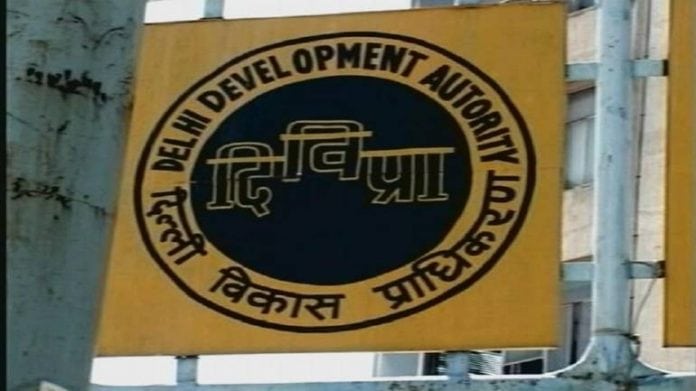Under the policy, agencies will develop infrastructure on the pooled land and return a portion of the plot to the farmer who can execute housing projects with the help of private builders.
Delhi Development Authority vice-chairman Udai Pratap Singh has said the land pooling policy was ready and “board of hearing” would be held by month-end.
“Hopefully by July-end, the policy on land pool will be submitted to the ministry which will notify it,” he told reporters at a press briefing organised by the housing and urban affairs ministry.
Under the policy, agencies will develop infrastructure such as roads, schools, hospitals, community centres, stadia on the pooled land and return a portion of the plot to the farmer who can execute housing projects with the help of private builders.
Earlier this week, housing and urban affairs minister Hardeep Puri had told Moneycontrol in an exclusive interaction that all the work on the land pooling policy had been done.
“Land pooling got mixed up with master Plan amendment. Now that the court has lifted its stay we are in the process of the 15- day consultation. That 15-day consultation period will be over on June 9. We will then listen to people, have meetings, people now have got time to submit their suggestions. So, my answer to land pooling is… very soon.”
In March, a parliamentary panel had pulled up DDA for delay in finalizing the policy, even five years after it was notified.
Land pooling in Delhi is expected to meet the residential needs of about 95 lakh people besides stimulating economic growth. It was earlier to be in place by end of April this year.
In December last year, the policy was simplified for speedy execution. Delhi Development Authority (DDA) was to act as a facilitator and planner as against the role initially envisaged for it as a part of simplification of execution of land pooling policy. The last date for receiving objections and suggestions from the public was February 24.
Originally, land pooled under the policy was to be transferred to DDA which was to act as the Developer Entity (DE) and undertake further sectoral planning and development of infrastructure in the pooled land. At the December meeting it had decided to do away with this requirement and said that land title will continue to be with the original landowners.
DDA was also asked to ensure single-window clearance mechanism for according necessary approvals for speedy implementation.
Said Ramesh Menon of Certes Realty Ltd, “The objections and suggestion made by experts to the Chapter 19 of the MPD 2021 needs to be addressed immediately, and the process of engagement between DDA, the DE and the landowners need to be formalised. Wherever needed, experts from the private sector should be roped in for effectively defining the process.”
Land Pooling Policy covers the greenfield areas in five zones viz., J, K-1, L, N and P-II coming under the Master Plan of Delhi-2021. To incentivise dense development for effective utilization of scarce land resource in the national capital, the policy permits enhanced FAR of 400 as against the present 150. To promote affordable housing, an additional FAR of 15 percent is also allowed.
About 22,000 hectares of land is expected to be pooled which could meet the needs of about 95 lakh people. Land pooling would catalyse economic, social and civic development of the national capital besides triggering substantial investments and employment generation.
Under the Land Pooling Policy, 60 percent of pooled land would be returned to landowners after infrastructure development if the pooled land is 20 hectares and above and 48 percent would be returned if the land pooled is between 2 and 20 hectares. Of the 60 percent of returned land, 53 percent will be for residential purposes, 5 percent for city-level commercial use and 2 percent for public and semi-public use. In the other case, the same would be 43 per cent, 3 percent and 2 percent, respectively.
Affordable houses for Economically Weaker Sections to be built under the policy shall be of the size of 32-40 sq mt. Half of this housing stock shall be retained by the developer entity to house community service people working for the residents/owners of the group housing. These houses will be built at the site or at premises contiguous to the site allotted. The other half of affordable houses shall be sold to DDA at the base cost of Rs 2,000 per sq ft for further sale to beneficiaries.
Menon says that “instead of relying on the in-house expertise of DDA, the assistance of organisations with management bandwidth, financial understanding & ground level expertise should be enlisted to fast-track the process of operationalisation”
The main challenges before DDA are three-fold – what will the actual operationalisation mechanism be like – the process of re-allotment (how will the 60 percent land be returned to the developer), when will spatial and services planning be initiated by DDA for the five zones and finally how will it put in place infrastructure and manpower to provide the last mile connect with people.
”DDA doesn’t have the last mile connect and infrastructure to handle the physical operationalisation of land pooling. Multiple agencies like DJB, MCD etc. have to be roped in, and policy interventions to be made immediately to augment the infrastructure needs of these proposed smart zones. Do not repeat the mistakes of Rohini and Dwarka,” adds Menon.


